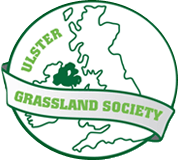Event Details
- Date: 20 Sep 2012
- Venue: Bell family farm, Co. Antrim
Obtaining the highest possible flock performance levels was the clear focus of the UGS (Ulster Grassland Society) Autumn Farm Walk, courtesy of a visit for members and non members to the Co Antrim farm of Roger and Hilary Bell.
Over the past number of years a strong commitment to improved drainage and regular re-seeding has paid a handsome dividend in allowing them secure exemplary levels of animal performance from both grazed grass and silage. High clover inclusion rates are a key feature of all the swards on the farm, which runs from 650 to 800 feet above sea level.
The sheep flock, for the most part comprises, Texel/Mule ewes. Roger buys in a number of purebred Mules on a regular basis.
“We cross the Mules with a Texel tip,” Roger explained.
“All of the crossbred ewes are bred to Suffolk rams in order to produce high quality lambs with an inherent ability to make best use of grazed grass. All our ewe lambs are put to Charollais tips.”
The commitment of both Roger and Hilary to their sheep enterprise is fully reflected in the flock’s benchmarking figures. Last year, they achieved a staggering 1.89 lambs sold per ewe across the entire flock. This figure takes account of empty ewes and those lost during the year.
“Benchmarking is crucially important,” Hilary commented.
“Yes it allows us to compare our performance with other sheep producers. But, more importantly, it gives us the means by which we can monitor our own performance on a year to year basis.”
August is the month when the Bells’ flock is sheared. This schedule has been chosen to ensure that the ewes will not be overly covered with wool when housed in early January.
“It also ensures that they will have sufficient wool to keep the cold at bay, once they go back out into the fields post lambing in mid March,” Roger stressed.
“Our aim is to make best use of grass and forage throughout the year. We built a new sheep shed on the farm a couple of years ago. This is also used to rear turkeys for Moy Park. However, once Christmas is over the shed is cleaned out and the sheep brought in. Lambing last year commenced on March 18th.
“We scan the ewes at housing and divide them up into groups: those carrying singles; twins and triplets.
“In the initial weeks after housing the sheep receive silage only. However, as lambing gets closer we offer meal and silage courtesy of a TMR with specific feeds formulated for the specific groups. The house is laid out on a grid basis, which allows the feeding operation to be carried out in an efficient manner.
“Our feeding strategy is driven by a commitment to offer high quality forage and a concentrate that contains high quality protein and other constituents of a similar standard.
“We do not feed meals after lambing. The challenge then is to ensure that the ewes and lambs can meet their needs from grazed grass alone.
Roger takes two cuts of silage each year – May and July – which he can manage himself, courtesy of his own contracting business.
“Again, the aim is to cut at the most appropriate time, so as to maximise forage quality,” he said.
“Normally, we take a third cut, which is made into bales.”
From an animal health point of view, all the sheep on the farm are wormed and fluked regularly.
“We also follow all relevant vaccination programmes rigorously,” Hilary stressed.
“The sheep are foot bathed every time they are gathered with feet pared accordingly.”
With Roger away a lot, courtesy of his contracting business, the sheep operation has been set up to allow Hilary get on with most of the day-to-day flock management jobs unaided. Significantly, the farm features an extensive network of roads and pathways with an excellent gating system providing easy access to every field.
“The yard has also been designed to allow me work with the sheep in a stress-free way. The use of a roll over crate is a tremendous asset in this regard,” she explained.
Both Roger and Hilary are committed to the increasing use of IT as a flock management tool. Already in use are several innovative identification and weighing systems, which they hope to build on for the future.













